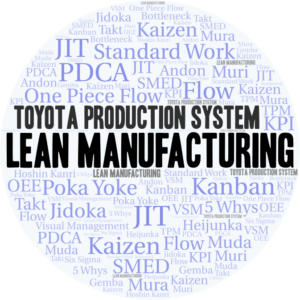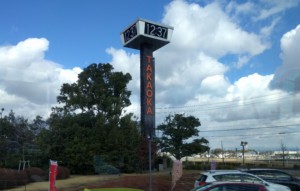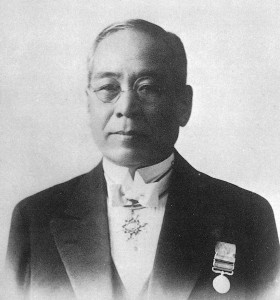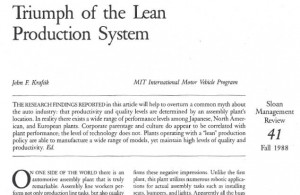 The Toyota Production System (TPS) is the archetype of lean manufacturing. Lean is often used as a synonym for the Toyota Production System, and that is generally quite accurate. It is also sometimes referred to as the “Westernized” version of the Toyota Production System. However, there are some smaller differences in the underlying approach, as well as some larger and often unintentional differences in its application. Let’s have a look!
The Toyota Production System (TPS) is the archetype of lean manufacturing. Lean is often used as a synonym for the Toyota Production System, and that is generally quite accurate. It is also sometimes referred to as the “Westernized” version of the Toyota Production System. However, there are some smaller differences in the underlying approach, as well as some larger and often unintentional differences in its application. Let’s have a look!
The Difference in Terminology

The Toyota Production System is the philosophy and culture of Toyota on how they organize their processes, both in manufacturing and in other areas of their businesses. It is used within the Toyota group, most famously the Toyota Motor Company, but also many other companies in their group, including Denso, Toyota Industries, Aichi Steel, JTEKT, Toyota Auto Body, Aisin, Toyota Boshoku, Towa Real Estate, Toyota Motor East Japan, Toyoda Gosei, Hino Motors, Daihatsu, Toyota Housing Corporation, and my former employer, the Toyota Central R&D Labs.

This corporate culture and the tools within were developed over decades, starting with the founder of Toyota, Sakichi Toyoda. In my view, one of the great things about Toyota is their relentless drive to improve, pushing toward true north for many generations of managers. Even nowadays, the system is always evolving and changing. On a side note, in my view Denso is now better at the Toyota Production System than Toyota Motor itself. I believe that the leadership at Denso is much better than the last CEO of Toyota Motor, Akio Toyoda.
Companies outside of the Toyota group have often used and adapted these approaches. The problem was, if you were at Daimler, you couldn’t really say that you use the system of a competitor (Toyota).
 In 1988, a young masters student, John Krafcik, studying under James Womack at the MIT, wrote a paper on the “Triumph of the Lean Production System.” The famous book by Womack et al. that popularized this approach, The Machine that changed the World, picked up the term lean manufacturing. This name stuck, and since then the Toyota Production System has been known as lean production of lean manufacturing. Even now, twenty-five years later, the term lean is still strong in industry, despite a multitude of attempts to rename it to “World Class Manufacturing,” “Synchronous Manufacturing,” “Operational Excellence,” “Six Sigma,” and more.
In 1988, a young masters student, John Krafcik, studying under James Womack at the MIT, wrote a paper on the “Triumph of the Lean Production System.” The famous book by Womack et al. that popularized this approach, The Machine that changed the World, picked up the term lean manufacturing. This name stuck, and since then the Toyota Production System has been known as lean production of lean manufacturing. Even now, twenty-five years later, the term lean is still strong in industry, despite a multitude of attempts to rename it to “World Class Manufacturing,” “Synchronous Manufacturing,” “Operational Excellence,” “Six Sigma,” and more.
The Difference in Content
 There are some differences in content between the Toyota Production System and lean manufacturing. They are the result of continued development both within and outside of Toyota. While companies outside of Toyota are always eager to copy the latest trends within Toyota (and consultants are eager to help them with that), Toyota does not always take over new developments from outside.
There are some differences in content between the Toyota Production System and lean manufacturing. They are the result of continued development both within and outside of Toyota. While companies outside of Toyota are always eager to copy the latest trends within Toyota (and consultants are eager to help them with that), Toyota does not always take over new developments from outside.
Toyota does look anywhere for inspiration to improve their production system. In fact, many, MANY ideas for the Toyota Production System came from outside of Toyota (e.g. from Ford, Junkers, Training within Industry, Nichibo, Danly, and many more). Toyota is pretty good at trying things out, picking up the useful ideas, and discarding the not-so-hot ones. Not all of the developments outside of Toyota have made it into Toyota. Here is an (incomplete) list, based on my knowledge or experience; feel free to add more in the comments below. Some of these additions may be useful, others not so much.
- Waste (Muda) does indeed come from Toyota, but it is much more prominent in the Western world. The West also added an eighth type of waste (unused human creativity), or even more (I found up to twenty-four types of waste when googling around).
- Kaizen events for short improvement sessions are not used at Toyota.
- Value Stream Mapping (VSM) is called Material and Information Flow Analysis (MIFA) at Toyota. While it is one cornerstone in lean, it is only a minor and much less standardized tool at Toyota.
- 5S at Toyota is only 4S. The Western addition of 5: Shitsuke for “Sustain, Self Discipline” is for Toyota the same as 4: Seiketsu for “Standardize.” I found even sources for 6, 7, and even 8S (Shukan for “Style”; and the English words Safety and Security).
- Kata is not really known at Toyota, even though the famous book is titled “Toyota Kata.”
- Hoshin Kanri is indeed from Toyota, but I am getting inconsistent messages on how intensely it is used. The abominable X-Matrix, however, is a product of Western consultants.
- Six Sigma also originated from outside of Toyota. The quality approach with six standard deviations is not really used at Toyota, albeit Six Sigma successfully re-branded itself as Lean Six Sigma, adding the methods from the Toyota Production System.
- The 8 D (Eight Disciplines Problem Solving) Method developed at Ford in 1987.
- “The 14 Management Principles of The Toyota Way” by Jeffrey Liker tries to summarize the philosophy at Toyota. It is hard to summarize a philosophy, but this is one of the more popular summaries.
- For pull production besides kanban and reorder point, there is CONWIP, POLCA, Drum Buffer Rope, and COPACABANA, or the (supposedly also pull) Demand Driven MRP (DDMRP).
- The whole concept of Industry 4.0 for digitizing an entire factory was tried at Toyota, but rejected, although of course they do use computers and robots too.
- The Harada Method to enhance employee development also comes from Japan, but not from Toyota.
- Quick Response Quality Control (QRQC) is an approach to quality management from Nissan.

This is only a short list, and there could be many more. If you want more, have a look at the (currently) 469 entries in my lean glossary, many of whom are from outside of Toyota.
The Difference in Application
 There are also some differences in application, or, should I say, in the underlying philosophy. This is due to the different ways lean is done at Toyota and in the Western world. Please note that there is A LOT of generalization in the following paragraphs, and there are companies outside of Toyota that do lean well (e.g., I have good opinions on Trumpf, ABB Stotz-Kontakt, or Kärcher, to name just a few). There are also plenty of good consultants out there (and here I leave it up to you if you want to include me in the list). But there are many more companies that achieve less than their potential.
There are also some differences in application, or, should I say, in the underlying philosophy. This is due to the different ways lean is done at Toyota and in the Western world. Please note that there is A LOT of generalization in the following paragraphs, and there are companies outside of Toyota that do lean well (e.g., I have good opinions on Trumpf, ABB Stotz-Kontakt, or Kärcher, to name just a few). There are also plenty of good consultants out there (and here I leave it up to you if you want to include me in the list). But there are many more companies that achieve less than their potential.
At Toyota, the Toyota Production System is mostly done by the people of Toyota, heavily relying on the people who actually work the processes. On the shop floor, these would be the front-line operators. They know their system well, and have a very strong interest in not making it worse with an “improvement.” The philosophy of the Toyota Production System permeates throughout the entire Toyota group.
In the West, lean is often aided by external consultants. They usually do not know the system as well as the operators, and they need to impress the person that pays them… which is usually not the operator. Unfortunately, impressing the client is not the same as impressing the operators, and sometimes the operators are less-than-thrilled on the latest changes. In some plants, “lean” is even a burned word due to previous failed lean projects.
 It also is harder to generate a culture change than to do a 5S workshop, and hence lean often tends more toward tools and methods rather than fundamental principles. This is also sometimes the fault of leadership. All too often, lean is seen as some tool that can be bought and then delegated to someone in the lower ranks of hierarchy. The people below should change, but of course not the person on the top. Unfortunately, good lean starts at the top, with soft skills like respect for people. I also often find that while there is plenty to improve, capacity for improvement has been eliminated to save money. The supervisor left on the shop floor simply have no time for improvement.
It also is harder to generate a culture change than to do a 5S workshop, and hence lean often tends more toward tools and methods rather than fundamental principles. This is also sometimes the fault of leadership. All too often, lean is seen as some tool that can be bought and then delegated to someone in the lower ranks of hierarchy. The people below should change, but of course not the person on the top. Unfortunately, good lean starts at the top, with soft skills like respect for people. I also often find that while there is plenty to improve, capacity for improvement has been eliminated to save money. The supervisor left on the shop floor simply have no time for improvement.
Again, this is not valid for all Western companies and consultants, and there are plenty that are good and on the right track on their lean journey. But with all too many the system is falling short of its potential. My hope is that this blog post will nudge some more in the right direction. Now, go out, strengthen the philosophy of lean manufacturing, and organize your Industry!
Source for some data and the inspiration
I was inspired to write this blog post by the excellent book by Michel Baudin and Torbjörn Netland, where they discuss Kaizen on page 33 and 34. The entire book is recommended reading 🙂
Baudin, Michel, and Torbjørn Netland. 2022. Introduction to Manufacturing: An Industrial Engineering and Management Perspective. 1st edition. New York, NY: Routledge. waste

Since you correctly referenced Krafcik but left out that Toyota was the most productive automaker plant because they have amongst other things, a “Lean production policy”. Secondly, so called TPS was not initially implemented in Toyota and Ohno was required to try it out as you referenced them, Denso. My Toyoda noticed his then middle managers would resist it hence Denso trial. It worked and then gradually implemented within Toyota. You should read Prof Amasaka’s now 35 years + inside Toyota research. TPS is only one of the Toyota “systems”. You need to review the causes of Toyota’s failure and their infamous recall and why President Watanabe’s decree for the 59% cost downs and 50% increase in world market share. They did and 7 years later the some 56+ deaths and US Congressional apology.
Great article Christopher. Timely reminder that the thinking permeates throughout the whole company.
Excellent comparison including the additions from consultants that don’t really understand TPS. When walking through the Georgetown KY facility during a weekly walk with President Fujio Cho I asked him for his definition of TPS. He paused and then replied, “applied industrial and operations engineering and common sense”. At first, that seemed simplified, but the pre-Toyota background was mechanical and Industrial engineering with extensive shop floor time in the value-added world. That helped me to understand his comment and It became clear his description was accurate and “common sense” was the most difficult part.
At AlliedSignal, in the mid-1990s we added a sixty-hour week of TPS training to the Six Sigma training and that became the dominate focus. GE picked that up and with their Six Sigma consultants and named the approach Lean Six Sigma. Six Sigma problem solving is used rarely and does not have a good return on investment except in rare cases. The pink belt, yellow belt, green belt, and black belt training was all about consultant income
Quick Question.. Is Toyota using Kamishibai boards?
Hi Donna, to my knowledge yes, as the method comes from Toyota.
Great post. Absolutely true!
Every Lean tool and approach, if western or eastern, is a workaround to shape behavior. When we try out and it fits for purpose, the organization and its capability can grow.
Every company that has no capacity at the lower leadership levels to find out themselves what it’s all about, goes through a couple of lean relaunches that do not sustain.
Thank you so much for the great article.
I would like to add A3 problem solving as well !
Toyota practices QC Circle activities but Mr. John Shock coined/ popularized that concept through a new term “A3” !
References:
1. https://www.toyota-global.com/company/history_of_toyota/75years/data/company_information/management_and_finances/management/tqm/change.html),
2. https://sloanreview.mit.edu/article/toyotas-secret-the-a3-report/
Clear and to the point, as usual. You are nailing it.
I can so relate to “All too often, lean is seen as some tool that can be bought and then delegated to someone in the lower ranks of hierarchy. The people below should change, but of course not the person on the top.”
And I love the qualificative “abominable” for the X-Matrix. So true! Filling it just for the sake of ticking the box to say you filled it.
Hallo Christopher,
a very nice Post. Thank you again
From my perspective, a highly interesting aspect and a great blog idea would be to explore the tools utilized by Toyota that are lesser-known in the Western world.
For example:
Shokuba Ryo-ku , 4S = 5S without Sustain (unachivable), Yokoten, YK-Y, Jishuken Projekte, Nemawashi…
Hello Alexander, lots of good suggestions. On 5S: I already have 4S (and 5,6,7, or even 8S) on my blog post on 5s https://www.allaboutlean.com/5s-method/
The others are also good suggestions. I put them on my (way too long) list of possible blog post, not sure when I get around to write them.
Cheers!
I always recommend Lean Practitioners,
Forget 2 Pillars of JIT and Jidoka.
Instead, study 2 pillars Pull and Multi-Process Handling. (this idea comes from Pro. Hiroaki Satake. I introduced his good/right book again and again on Linkedin).
Dear Osamu, good to hear from you again. I wish Prof. Hiroaki Satake’s book would be available in English…